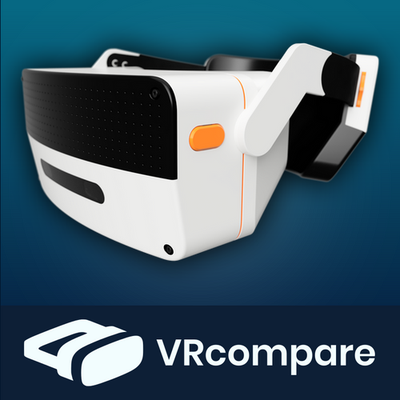
Simula has recently uploaded its headset specs onto vr-compare.com, a helpful site which shows VR comparisons in a standardized format. Below is a comparison of the Valve Index (the best headset officially supported by Simula's window manager), the Oculus Quest 2 (most popular portable VR headset), and the upcoming Simula One. We have bolded the metrics which we consider particularly important.
The usual disclaimer: Since we are still actively developing the Simula One, some of these its specs might change over time.
| Valve Index | Oculus Quest 2 | Simula One | |
 |
 |
 |
|
| Manufacturer | Valve | Oculus | SimulaVR |
| Website | valvesoftware.com | oculus.com | simulavr.com |
| Device Type | PC-powered VR | Standalone VR | Standalone VR |
| Platform |  |
 |
 |
| SteamVR | Oculus Home, SteamVR (Facebook account required) | Linux | |
| Announced | April 29, 2019 | September 15, 2020 | December 14, 2021 |
| Release Date | April 30, 2019 | October 12, 2020 | Unreleased (expected January 2022 Kickstarter) |
| Retail Price | $499 (headset only); $749 (with controllers); $999 (with controllers, base stations) |
$299 (with controllers); 128 GB model: $299; 256 GB: $399 |
TBD |
| Type of Headset | Gaming/Entertainment Device | Gaming/Entertainment Device | VR Computer (VRC) |
| Optics | Dual-element canted Fresnel lenses | Fresnel lenses | Triple-element non-fresnel design |
| Display Type | 2 x LCD | Single Fast switch LCD | 2 x LCD |
| Subpixel Layout | RGB stripe | RGB stripe | RGB stripe |
| Resolution | 1440x1600 per eye | 1832x1920 per eye | 2448x2448 per eye |
| PPD | 11.07 | 20.58 | 35.5 [1] |
| Refresh Rate | 144 Hz | 120 Hz | 90 hz |
| Field of View | 107° horizontal; 104° vertical | 89° horizontal; 93° vertical | 100° |
| Passthrough | Dual 960x960 passthrough cameras | Grayscale via tracking cameras | Dual wide-angle high-resolution RGB cameras |
| IPD Range | 58-70 mm hardware adjustable | 58-68 mm (hardware adjustable); 3 fixed IPD settings: 58mm, 63mm, 68mm | 55mm-77mm hardware adjustable |
| Dimensions | N/A | 191.5 x 102 x 142.5 mm (excluding headstrap) | TBD |
| Weight | 809 g (with headstrap) | 503 g (with headstrap) | TBD |
| Material | Plastic, foam facial interface | Plastic, foam facial interface | Plastic, foam facial interface |
| Headstrap | Hard retractable padded strap, detachable speakers | Flexible fabric strap | Hard padded retractable strap |
| Colors | Black | White | Black / White / Orange |
| Tracking Type | 6 DoF Inside-out (marker based) | 6 DoF Inside-out via 4 integrated cameras | 6 DoF Inside-Out, TBD |
| Base Stations | 2 x SteamVR 2.0 | ✗ | ✗ |
| Eye Tracking | ✗ | ✗ | TBD |
| Face Tracking | ✗ | ✗ | ✗ |
| Hand Tracking | ✗ | ✓ | TBD |
| Body Tracking | ✗ | ✗ | ✗ |
| Speakers | Off ear stereo speakers | Integrated stereo speakers | ✗ |
| Microphone | ✓ | ✓ | ✗ |
| 3.5mm Audio Jack | ✓ | ✓ | ✓ |
| Ports | Front USB port | USB-C | 1 USB4/Thunderbolt 4; 3-4 USB3.2 Gen 2 via USB-C with DisplayPort alt mode |
| Video Connection | DisplayPort 1.2, USB 3.0 | Oculus Link via USB-C (Wireless via Virtual Desktop, AirLink) | DisplayPort 1.4a, USB 3 |
| WiFi | ✗ | WiFi 6 | Wi-Fi 6 |
| Bluetooth | ✗ | Bluetooth 5.0 LE | Integrated |
| Chipset | N/A | Qualcomm Snapdragon XR2 | Integrated |
| CPU | N/A | Octa-core Kryo 585 (1 x 2.84 GHz, 3 x 2.42 GHz, 4 x 1.8 GHz) | i7-1165G7 Processor (4.70 GHz / 12M cache) |
| GPU | N/A | Adreno 650 | Integrated (Iris Xe graphics) |
| Memory | N/A | 6 GB | 16 GB (dual-channel) |
| Storage | N/A | 128 GB (256 GB also available, 64 GB model discontinued) | 1TB NVMe M.2 SSD |
| SD Card Slot | N/A | ✗ | TBD |
| Battery Capacity | N/A | 3640 mAh | TBD |
| Battery Life | N/A | 3 hours | TBD |
| Charge Time | N/A | 2.5 hours | TBD |
[1] Our headset PPD has recently dropped from 36.2 (last week) to 35.5. Last week we had to make a tough optics decision to trade off a slight amount of PPD for "pupil swim" correction.
from Hacker News https://ift.tt/3Hbzw7J
No comments:
Post a Comment
Note: Only a member of this blog may post a comment.